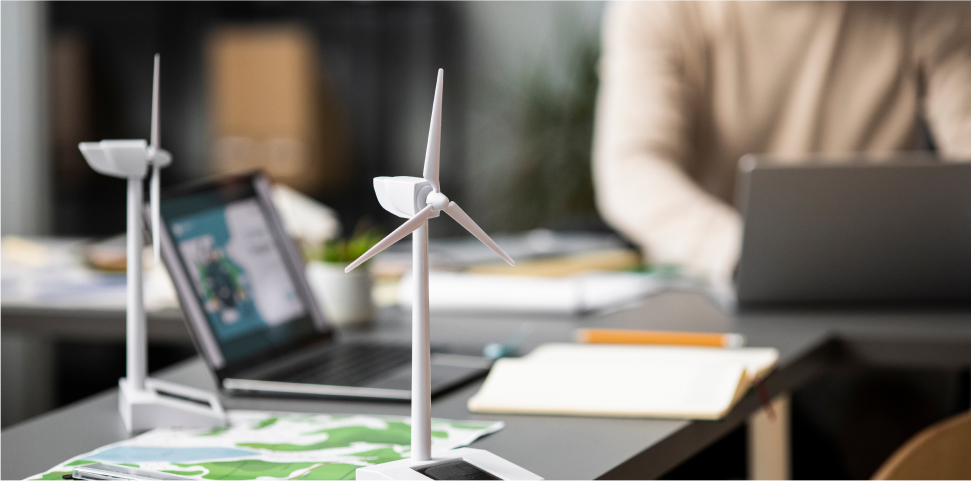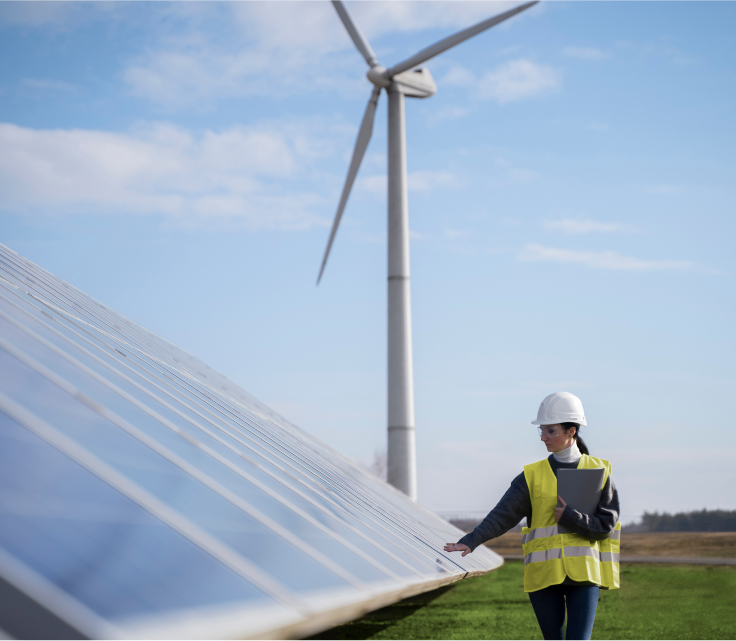The Long-Term Research Agenda is a strategic roadmap for advancing wind energy research, driving innovation, and shaping the future of sustainable energy.
Aiming at enhancing wind energy reseach eawe fell back on the collective knowledge of its members to work out a long-term research agenda, available here as an open access publication within the journal Wind Energy Science.
Driven by problems and curiosity, addressing basic research and fundamental knowledge, the authors sincerely hope that it will spur an intensive discussion worldwide within the wind energy community.
Composite material rotor blades and metal wind turbine support structures should be capable of withstanding highly fluctuating fatigue loads in a largely unattended 25-30 year operational life. Structural components and system designs complying with long-term operation present huge challenges and ask for (new) materials, methods, and (application) effects, all requiring full understanding of the fundamentals.
Wind turbines and wind farms experience three-dimensional unsteady aerodynamic phenomena ranging from sub-millimetre scale (airfoil boundary layer) to hundreds of kilometres when clustering. A current aerodynamics main challenge is to understand and model these phenomena throughout the full scales range, and to design through aeroelasticity and control for coupling turbine’ structural life and wind farm performance.
Electricity conversion encompasses all individual steps from the rotor hub through mechanical and electrical systems including frequency converter, transformer and (offshore) wind farm infrastructure. The scientific challenge is in removing critical technical barriers utilizing state-ofthe- art and new conversion solutions, with significant positive impact on CoE-performance especially on further up scaled offshore turbines.
The topic focus is on reduction or even elimination of unexpected failures. For optimising operation and maintenance, thorough knowledge of external conditions as well as enhanced emphasis on diagnosis and data analysis are essential. Key developments are also required in structural health monitoring, prognostic and stochastic maintenance optimisation and decision tools.
Current wind turbine design is often based upon iterations among discipline-oriented groups of specialists until an acceptable compromise solution has been identified, but an integrated design approach is still lacking. A truly holistic design methodology, using validated numerical models with adaptive levels of fidelity (different trade-offs between accuracy versus efficiency) and combined with automated algorithms, could lead to more satisfactory solutions.
Compared with oil & gas industry know-how and experiences, seabed-fixed and floating offshore wind turbine support structures are smaller, more dynamic, and operate under different conditions. Current state of the art simulation tools are limited in terms of features and a main research challenge is how all hydrodynamic and geotechnical effects relevant to offshore turbines can be predicted in an efficient, accurate and reliable manner.
Offshore wind farms rapid overall growth causes cumulative environmental impacts by pile-ramming noises, hard substratum formations (piles and rock-fill) , moving rotor blades, and men. Effects on benthic organisms, birds, fish and sea mammals have only been partly quantified and could range from positive to neutral and negative. Mitigation and aquaculture will create fresh opportunities.
In the plans for a transition towards sustainable energy systems, which is the political goal in many countries, wind energy typically plays an essential role. However, with the increasing shares of wind energy in the energy systems, societal and economic aspects become more and more challenging. It is thus of utmost importance to understand and incorporate political, social and economic aspects in the research, so that wind energy can continue to be a success story.
For a detailed overview of our Long-Term Research Agenda, including specific goals, methodologies, and expected outcomes, download the full PDF document. This comprehensive guide outlines our strategic approach to advancing wind energy research.
EAWE employs rigorous monitoring and evaluation processes to ensure the highest standards of research quality and impact. We continuously assess our projects to measure progress, identify improvements, and ensure alignment with our strategic goals.
We regularly evaluate our research and its impact to stay relevant and improve.


EAWE welcomes innovative research proposals that align with our key themes and objectives. If you have a project idea that can contribute to the advancement of wind energy, we encourage you to share your views to shape the future of wind energy research.

EAWE is committed to fostering international collaborations to expand the reach and impact of our research. Learn more about our international partnerships and how you can get involved in global wind energy projects.